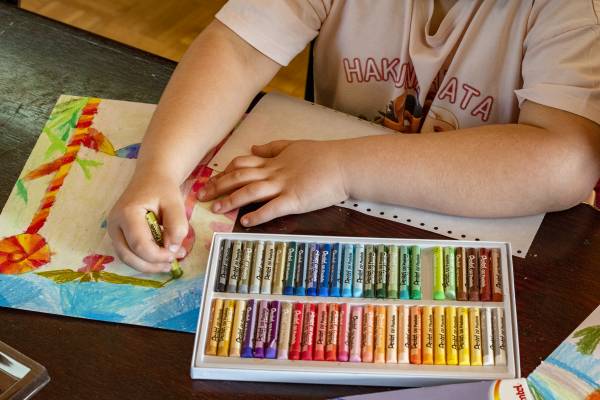 Oil pastels offer a unique and versatile medium for artists to create vibrant and expressive artwork. With their rich colors and creamy texture, oil pastels allow for a wide range of techniques and effects. In this blog post, we will share valuable tips and techniques to help you master oil pastel painting and create stunning works of art.
Oil pastels offer a unique and versatile medium for artists to create vibrant and expressive artwork. With their rich colors and creamy texture, oil pastels allow for a wide range of techniques and effects. In this blog post, we will share valuable tips and techniques to help you master oil pastel painting and create stunning works of art.
Choose Quality Oil Pastels:
Invest in artist-grade oil pastels for better color intensity and blendability.
Look for brands that offer a wide range of colors and a soft, buttery consistency.
Avoid low-quality or student-grade oil pastels that may have a waxy texture and limited color range.
Prepare Your Surface:
Use a heavyweight paper or a specially designed pastel paper with a toothy texture to hold the oil pastel.
Consider priming your surface with a thin layer of gesso to provide better adhesion and durability.
Layering and Blending Techniques:
Start with a light layer of color and gradually build up layers for depth and richness.
Experiment with different blending techniques, such as using your fingers, blending stumps, or a soft cloth.
Use cross-hatching, stippling, or feathering techniques to create texture and interesting effects.
Explore Color Mixing:
Experiment with blending different colors together to create new shades and variations.
Try layering complementary colors to create depth and contrast.
Keep in mind that oil pastels can’t be mixed on the palette like traditional paints, so color mixing happens directly on the artwork.
Use a Solvent for Transparent Effects:
Dilute your oil pastels with a solvent like turpentine or mineral spirits to create transparent washes and glazes.
Apply the solvent with a brush or a soft cloth for a subtle, watercolor-like effect.
Protect Your Work:
To prevent smudging, consider using a fixative spray between layers or after completing your artwork.
Place a sheet of glassine or tracing paper over finished sections to prevent accidental smudging or transfer.
Experiment with Mixed Media:
Combine oil pastels with other mediums, such as acrylic paints, watercolors, or colored pencils, for added dimension and effects.
Explore different surfaces, such as canvas, wood panels, or textured boards, to create unique mixed-media artworks.
Practice and Experiment:
Dedicate time to practice and explore different techniques.
Experiment with unconventional tools like palette knives, toothpicks, or cotton swabs for interesting mark-making.
Protect Your Pastel Set:
Keep your oil pastels clean and organized by storing them in a protective case or box.
Use a separate sheet of paper or glassine between layers to prevent smudging and color transfer.
Oil pastels offer endless possibilities for creating vibrant, expressive, and textured artwork. By choosing quality materials, preparing your surface, exploring layering and blending techniques, experimenting with color mixing, using solvents for transparent effects, protecting your work, and embracing mixed media, you can unlock the full potential of oil pastels. Remember, practice and experimentation are key to mastering this versatile medium. So, grab your oil pastels, let your creativity flow, and enjoy the journey of creating beautiful and captivating oil pastel paintings.